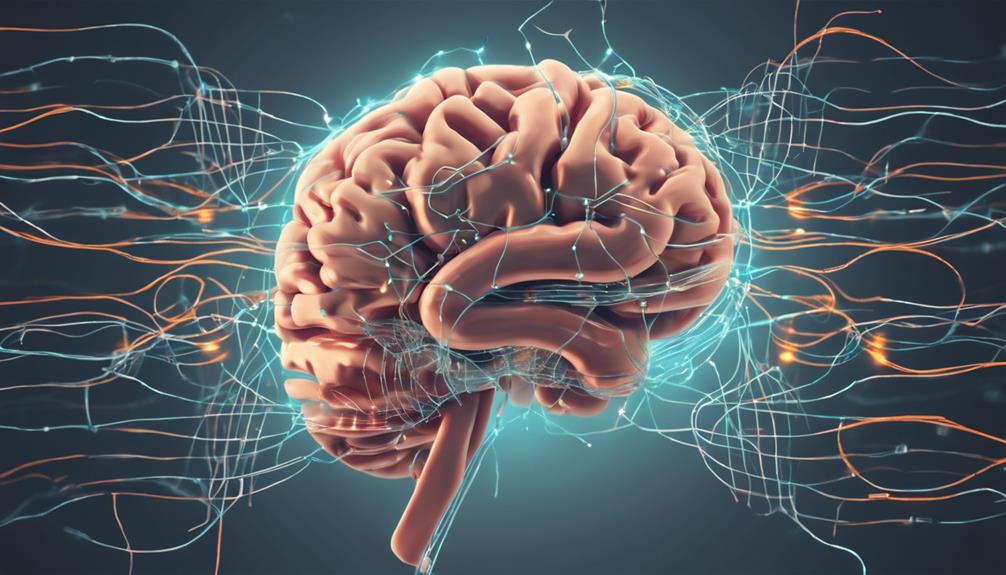Discover the art of mastering subliminal hypnosis with these powerful techniques: understanding subliminal perception, embedding messages in visuals, harnessing the power of repetition, incorporating NLP techniques, and enhancing messaging with music. Uncover the secrets to tapping into the subconscious mind for profound transformations and lasting change. Explore the depths of subliminal influence and how it can shape beliefs, behaviors, and choices without conscious awareness. Open yourself to a realm of hidden possibilities that can unlock new potentials within you. Embrace these techniques to unleash the full power of your subconscious for personal growth and development.
Understanding Subliminal Perception

By delving into the realm of subliminal perception, individuals can gain insight into the subtle ways in which the mind processes information below the threshold of conscious awareness. Subliminal advertising, a technique often used in marketing, aims to influence consumers' behavior without their explicit knowledge. This method works by presenting messages or stimuli below the level of conscious perception, thereby bypassing critical thinking and directly targeting the subconscious mind.
The psychological impact of subliminal advertising is profound. Studies have shown that these hidden messages can evoke emotional responses, shape preferences, and even alter decision-making processes. By tapping into individuals' unconscious desires and fears, advertisers can subtly nudge consumers towards certain products or behaviors. This manipulation of the subconscious can lead to increased brand recognition, enhanced trust in a product, and ultimately drive sales.
Understanding the power of subliminal perception is crucial in a world where we are constantly bombarded with hidden messages. By being aware of these techniques, individuals can better protect themselves from unwanted influences and make more informed choices in their daily lives.
Embedding Messages in Visuals
Within the realm of subliminal hypnosis techniques, the method of embedding messages in visuals plays a crucial role in influencing individuals' subconscious minds. Visual stimuli have a profound impact on our psyche, often bypassing our conscious awareness and directly accessing the subconscious.
By incorporating hidden messages within images or videos, practitioners of subliminal hypnosis can effectively plant suggestions deep within the viewer's mind.
The power of visual stimuli lies in their ability to evoke emotions, memories, and associations without the need for explicit verbal communication. When these visuals are strategically designed to include subliminal messages, they can trigger specific responses or behaviors in individuals without their conscious realization.
This technique is particularly effective in advertising, where brands use subtle imagery to influence consumer preferences and purchasing decisions.
Harnessing the Power of Repetition

How can the technique of harnessing the power of repetition enhance the effectiveness of subliminal hypnosis methods?
Repetition is a fundamental aspect of subliminal messaging, as it reinforces the desired affirmations and aids in subconscious acceptance. By incorporating repetitive affirmations into subliminal content, individuals can effectively program their minds for positive change.
Subliminal conditioning relies heavily on the principle that repeated exposure to specific messages can influence behavior and beliefs on a subconscious level. Through consistent repetition, these affirmations can bypass conscious resistance and penetrate deeply into the subconscious mind, where lasting changes can occur.
This technique is particularly powerful when used in conjunction with other subliminal hypnosis methods, as it amplifies the overall effectiveness of the messaging.
Incorporating repetitive affirmations into subliminal content allows individuals to rewire their thought patterns and cultivate new beliefs that align with their goals. By harnessing the power of repetition, subliminal hypnosis can facilitate profound personal transformation by shaping attitudes, behaviors, and perceptions at a subconscious level.
Incorporating NLP Techniques
To further enhance the impact of subliminal hypnosis methods, practitioners can integrate Neuro-Linguistic Programming (NLP) techniques into their approach, expanding the toolkit for subconscious transformation and personal growth. NLP offers powerful strategies such as anchoring emotions and reframing beliefs, which can deepen the effectiveness of subliminal messaging.
Anchoring emotions involves associating a specific trigger with a desired emotional state. By linking positive emotions to certain stimuli or behaviors, individuals can access those emotions more readily, reinforcing the desired changes on a subconscious level. This technique can be particularly useful in reinforcing affirmations or visualizations delivered through subliminal messages.
Reframing beliefs is another key NLP technique that can be seamlessly integrated into subliminal hypnosis. By helping individuals reinterpret limiting beliefs or negative thought patterns, practitioners can facilitate profound shifts in mindset and behavior. Through subtle suggestions embedded in subliminal messages, individuals can begin to adopt more empowering beliefs, paving the way for lasting personal transformation and growth.
Enhancing Subliminal Messaging With Music

Incorporating carefully selected music can significantly enhance the effectiveness of subliminal messaging by evoking emotional responses and creating a deeper connection with the subconscious mind. Music selection plays a crucial role in setting the tone and mood for the subliminal messages to penetrate the subconscious.
The right music can evoke specific emotions, such as relaxation, motivation, or focus, amplifying the impact of the messages being delivered.
Additionally, audio effects like binaural beats or isochronic tones can further enhance the subliminal messaging experience. These auditory stimuli can synchronize brainwaves, inducing states of deep relaxation or heightened focus, making the mind more receptive to the embedded suggestions.
Frequently Asked Questions
How Can I Measure the Effectiveness of Subliminal Messages?
To measure subliminal messaging success and understand its impact, one can conduct pre-test and post-test assessments, track behavioral changes, gather feedback or conduct surveys, analyze subconscious responses, and compare results against predetermined goals or benchmarks for objective evaluation.
Are Subliminal Messages Ethical to Use on Others?
Ethical considerations surrounding the use of subliminal messages on others are complex. Understanding the potential psychological impact is crucial. Respect for autonomy, consent, and ensuring messages promote well-being are essential in navigating the ethical complexities.
Can Subliminal Messages Be Harmful to the Subconscious Mind?
When considering the potential dangers of subliminal messages on the subconscious mind, it's crucial to acknowledge the hidden influences that may impact individuals unknowingly. Understanding the ethical implications and psychological effects is paramount.
What Are Common Misconceptions About Subliminal Hypnosis?
Misconceptions about subliminal messaging in hypnosis often revolve around its perceived manipulative nature and potential for negative psychological effects. However, when used ethically and responsibly, subliminal techniques can be a powerful tool for positive change and personal growth.
Is There a Limit to the Number of Messages in a Subliminal Audio Track?
In subliminal audio tracks, message saturation can impact effectiveness. While there is no fixed limit to the number of messages, maintaining a balance is crucial. Consider factors like audio track length to ensure clarity and avoid overwhelming the listener.
Conclusion
In conclusion, mastering subliminal hypnosis requires a deep understanding of subliminal perception. The ability to embed messages in visuals, harness the power of repetition, incorporate NLP techniques, and enhance messaging with music are all essential components. By utilizing these techniques effectively, one can tap into the subconscious mind and influence behavior in a subtle yet powerful way.
It is essential to approach subliminal hypnosis with care and responsibility to ensure ethical use of this powerful tool.







































